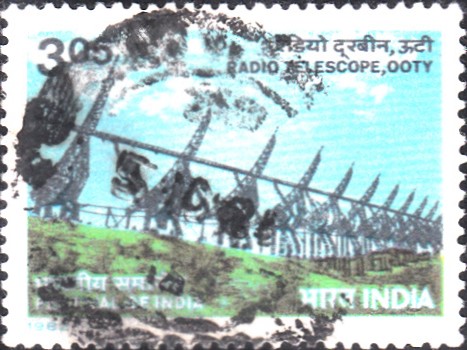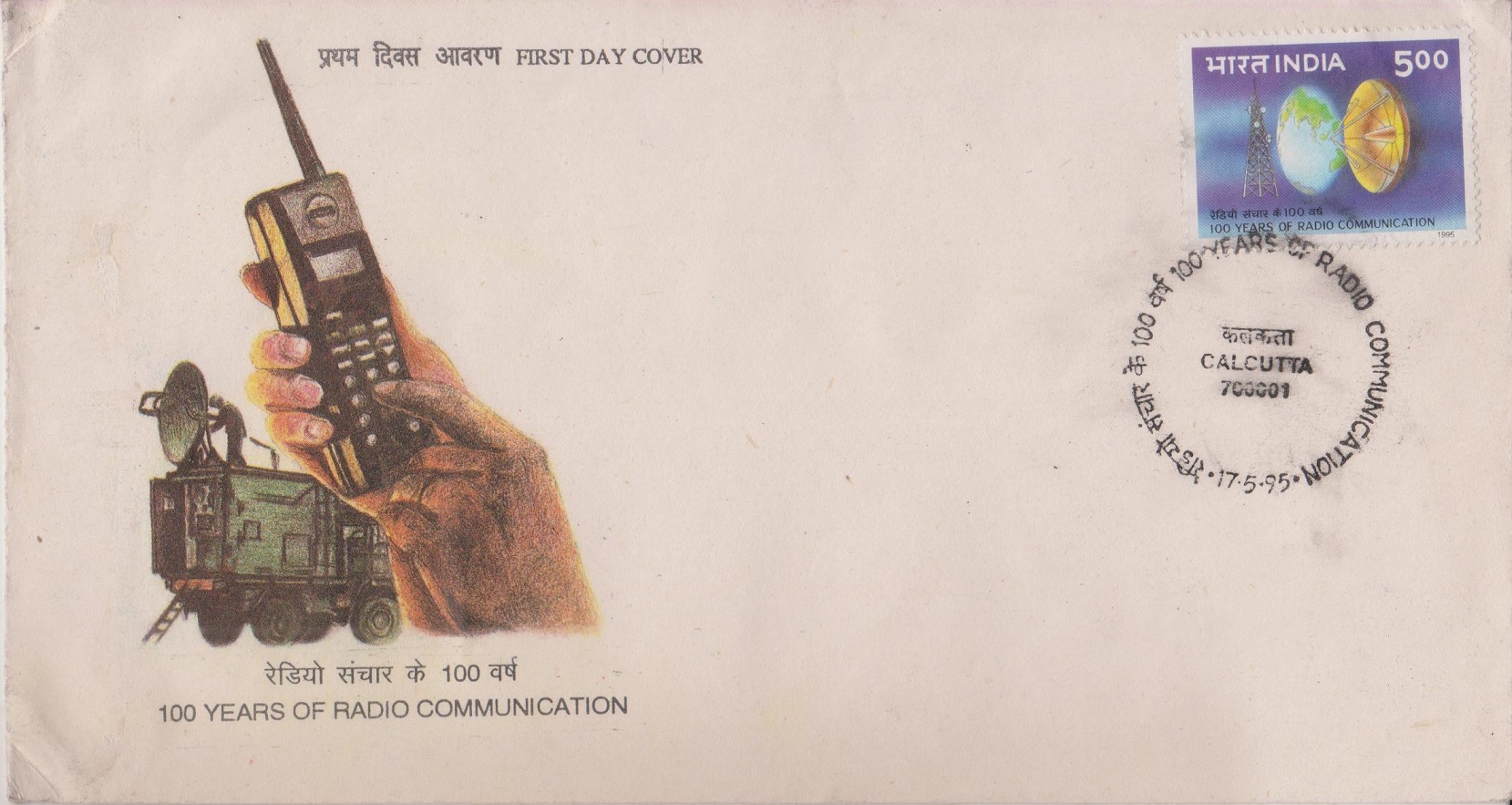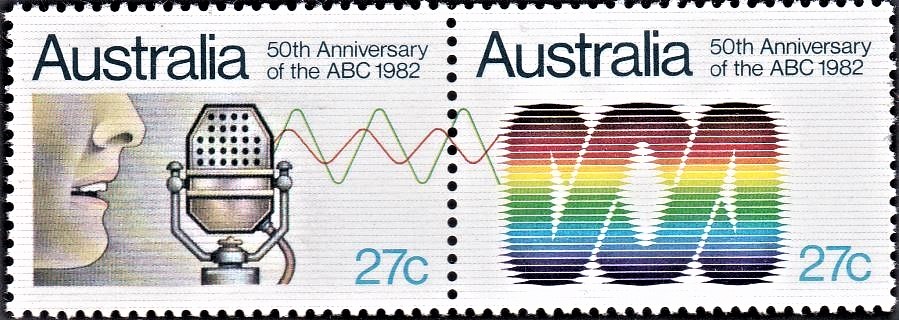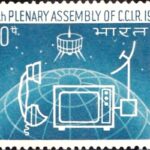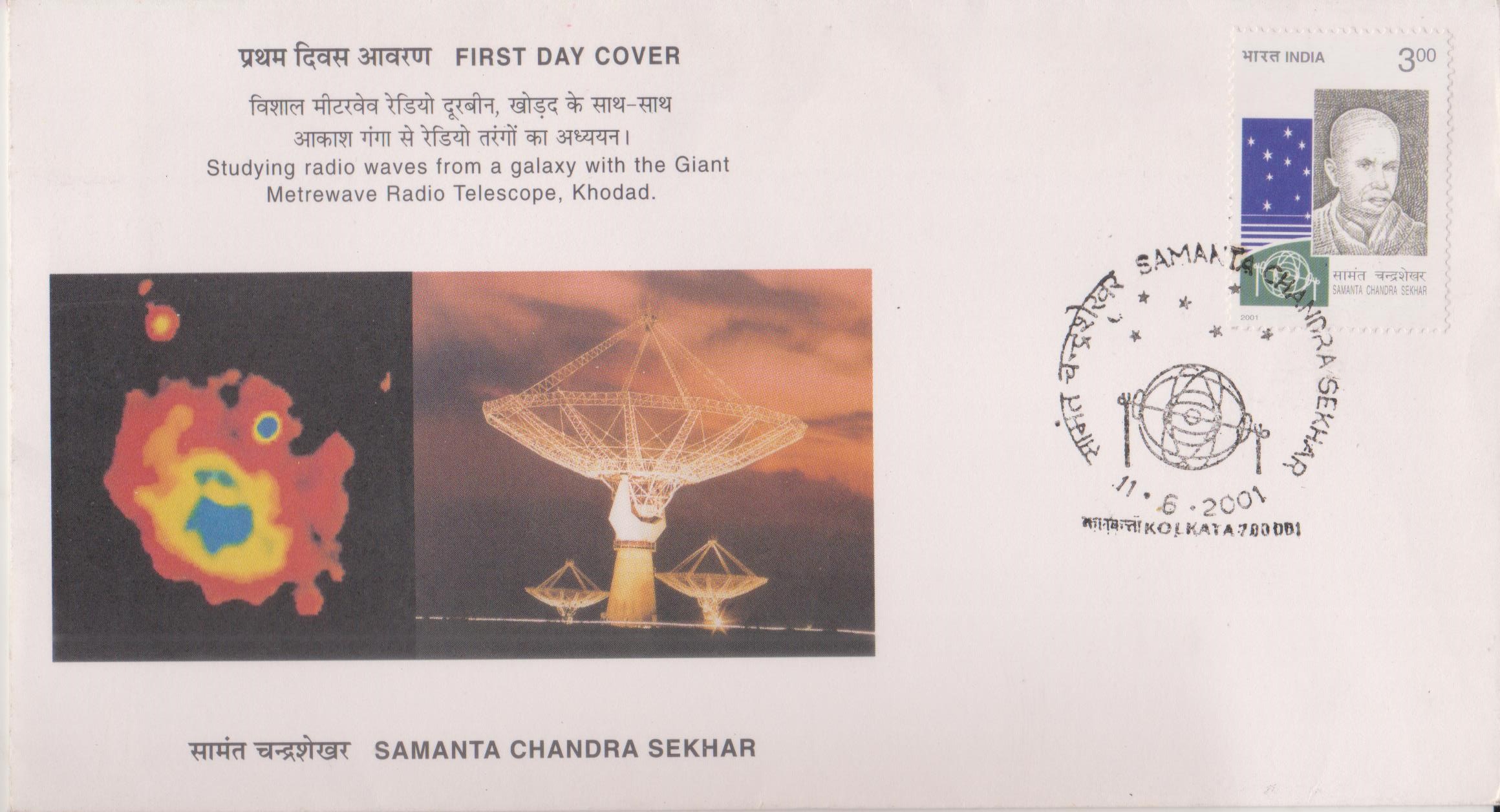
Samanta Chandra Sekhar
A commemorative postage stamp on Pathani Samanta, an Indian astronomer & compiler of Siddhanta Darpana :
 Issued by India
Issued by India
Issued on Jun 11, 2001
Issued for : The Department of Posts is happy to issue a postage stamp in honour of this genius who revived traditional Indian Astronomy.
Design : The stamp design includes Gola Yantra, an instrument used by Chandra Sekhar for measuring planetary positions. The First Day Cover portrays the Giant Metrewave Radio Telescope (GMRT), located at Khodad near Pune. This state of the art radio telescope, the largest in the world, represents the coming of age of modern Indian Astronomy, the foundation for which was laid by the ancient naked eye astronomers.
Samanta Chandra Sekhar epitomised the greatness of traditional Indian astronomy which attempted with considerable success, to unravel the mysteries of the heavenly bodies through observations with the naked eye. The giant metrewave radio telescope, Khodad, which is a modern, state of the art, aperture synthesis radio telescope represents the other end of the continuum of Indian astronomy.
Credits :
Stamp : Sankha Samanta
FDC : Based on material furnished by the National Centre for Radio Astrophysics, Pune
Cancellation : Alka Sharma
Type : First Day Cover
Colour : Four Colour
Denomination : 300 Paise
Overall size : 2.90 x 3.91 Cms.
Printing size : 2.54 x 3.55 Cms.
Perforation : 13 x 13
Paper : Imported Unwatermarked Stamp Paper
Stamps Printed : 0.4 million
Number per issue sheet : 40
Printing Process : Photo Offset
Printer : Madras Security Printers Ltd.
Name : Mahamahopadhyaya Chandrasekhar Singh Harichandan Mohapatra Samanta
Born on Dec 13, 1835 at Khandapada, Nayagarh district, Odisha, India
Died on Jun 11, 1904
About :
- Samanta Chandra Sekhar (1835-1904) is a prominent name in traditional Indian Astronomy, who has been placed by some scholars at par with the great fours of Aryabhata, Varahamihira, Brahmagupta and Bhaskracharya.
- Chandra Sekhar was taught to identify stars by his father when he was a child. He developed deep insight into astronomy through self education. Finding that the stars and planets did not rise and appear at positions predicted by the ancient Siddhantas, he set out for observation, night and day, checking the figures occurring in the earlier works. He began recording his observations and making formulations of the ideas at the age of twenty three and started putting them in the form of a treatise some three years later. The complete script of Siddhanta Darpana, his treatise, was ready by 1869, when he was thirty four. However, the work was checked and refined for twenty three years more, till it was declared by the author to be closed in 1892.
- The Siddhanta Darpana is divided into five sections, of which the first two deal with the mean motion and true position of the planets respectively. The third section deals with the motion described in terms of space, time and direction. The fourth gives an account of related mathematical topics like spherical trigonometry and the fifth describes different ways of reckoning time. Chandra Sekhar observed, verified and corrected wherever necessary, all that was known to the Hindu astronomers for thousands of years. The Siddhanta Darpana has been written in beautiful, metrical Sanskrit verse and is a fine piece of literary work apart from being of appreciable scientific value. Further, the work enjoys practical importance even today, as the most widely accepted almanac in Orissa is prepared as per the prescriptions of the Darpana.
- Chandra Sekhar did not know about modern astronomical instruments. It is remarkable that he had used only some rudimentary instruments, some of them devised by himself, for his extraordinary observations. Samanta had made contributions to all the four major aspects of astronomy, namely (i) observation (ii) calculation (iii) method of measurement and (iv) theory and model. The “Nature” and the “Knowledge”, famous scientific journals, wrote in praise of Siddhanta Darpana and Samanta Chandra Sekhar, in 1899. The former declared this genius even greater than the famous Tycho Brahe and the latter named him the greatest naked eye astronomer.
- Text : Based on material furnished by the Samanta Chandra Sekhar Smruti Parishad, Bhubaneswar.


